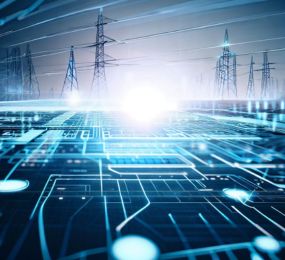Power grids are increasingly targeted by sophisticated cyber threats that can disrupt operations and compromise critical infrastructure security. Effective cyber threat detection and response systems are essential to protect these vital systems from evolving cyber threats and attacks.
The Growing Threat Landscape:
As power grids become more digitalized and interconnected, they become more vulnerable to cyber attacks. Malicious actors, including nation-states, hacktivists, and cybercriminals, target power grids to cause widespread disruptions, steal sensitive data, and exert geopolitical pressure. The growing complexity of smart grids and the proliferation of IoT devices further expand the attack surface, making robust cybersecurity measures more crucial than ever.
Real-Time Threat Detection:
Cyber threat detection systems employ advanced technologies such as machine learning, artificial intelligence, and behavioral analytics to identify potential threats in real time. These systems continuously monitor network traffic, system logs, and user activities to detect anomalies and suspicious patterns. By leveraging AI and machine learning algorithms, threat detection systems can quickly identify emerging threats, even those that have not been previously encountered.
Proactive Threat Response:
Effective threat response strategies are essential to mitigate the impact of cyber attacks on power grids. Automated response systems can isolate affected components, contain the spread of malware, and initiate recovery procedures. Incident response teams, equipped with detailed threat intelligence, can swiftly investigate and remediate security incidents. Collaboration between utilities, government agencies, and cybersecurity experts ensures a coordinated and effective response to cyber threats.
Enhancing Grid Resilience:
Implementing robust cybersecurity measures enhances the resilience of power grids. This includes regular vulnerability assessments, penetration testing, and security audits to identify and address weaknesses. Additionally, investing in cybersecurity training for personnel ensures that employees are equipped to recognize and respond to cyber threats effectively.
Future Directions:
As cyber threats continue to evolve, power grids must adopt advanced cybersecurity solutions to stay ahead of adversaries. Innovations such as blockchain technology for secure communication, quantum encryption for data protection, and AI-driven threat intelligence platforms will play a significant role in enhancing grid security.
Cyber threat detection and response are critical components of power grid security. By leveraging advanced technologies and proactive strategies, utilities can protect their infrastructure from cyber attacks, ensuring a stable and reliable power supply. As the digital transformation of power grids accelerates, the focus on cybersecurity will be paramount in safeguarding the future of energy.
Visit our website to register and secure your spot today! click here: https://bit.ly/3peklYc
For more information and group participation, contact us: [email protected]
















